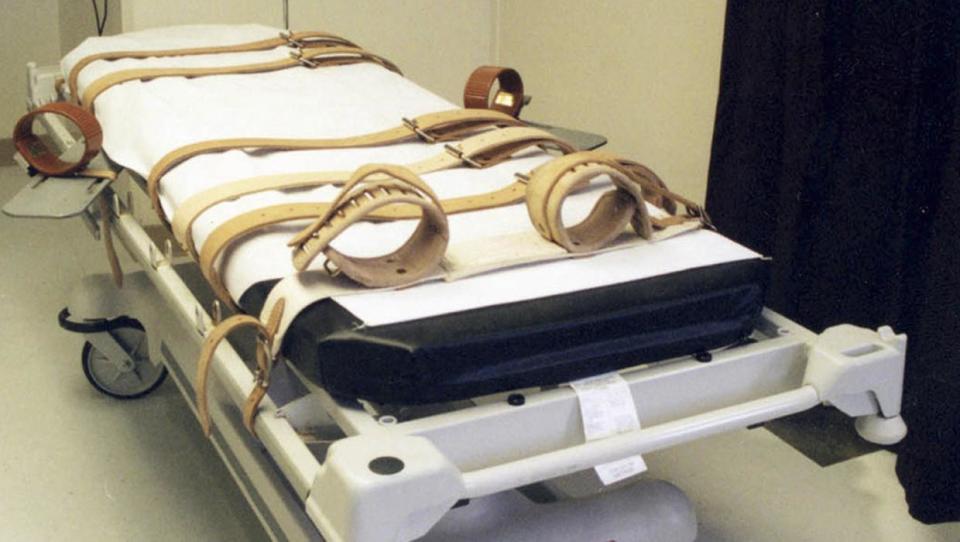Nikolas Cruz would have been the youngest, most destructive inmate on Florida's death row
If Parkland school shooter Nikolas Cruz had been sentenced to death instead of life in prison, he would have had the distinction of being convicted of killing far more people than any other inmate on Florida's death row — ever.
Before a Broward County jury was summoned to decide whether Cruz should live or die, he pleaded guilty to 17 counts of first-degree murder and 17 counts of attempted murder in the February 2018 massacre at Marjory Stoneman Douglas High School.
The scope of Cruz’s murderous rampage far eclipses those of any other inmate who has been executed or any of the 302 men and women who are currently on death row at three Florida prisons.
Some, such as notorious serial killer Ted Bundy, either claimed or were suspected of killing dozens of people. But Bundy, who confessed to slaying 30 women and is believed to have killed far more, was convicted only of the 1978 murders of two coeds at the Chi Omega house at Florida State University and a 12-year-old girl in Lake City.
Of those currently on death row, none has been convicted of killing more than six people.
Cruz sentenced to life in prison: Victims' families, politicians condemn life sentence verdict by Nikolas Cruz jury
Parkland families angry with verdict: 'I'm disgusted': Victims' families angry after Parkland shooter sentenced to life in prison
The horror of the 'Xbox murders in Deltona in 2004
Troy Victorino and Jerome Hunter were convicted for their roles in what is known as the “Xbox Murders” or the “Deltona Massacre.”
Victorino in 2004 encouraged Hunter and two other men to break into a house in Deltona where they bludgeoned four men, two women and a dog to death. Victorino blamed one of the victims for having him evicted from a vacant house. He wanted revenge and to retrieve the Xbox he had left behind.
Rory Enrique Conde, who has been on death row since March 2000, is known as the “Tamiami Trail Strangler.” He was convicted of killing six prostitutes along the well-known Miami highway in a five-month span from September 1994 to January 1995.
Mesac Damas also claimed six victims. The Collier County man was convicted of stabbing his wife and five children to death in 2009. After he fled and was arrested in his native Haiti, he told agents that “bad spirits" and voices were telling him that his wife would leave him.
Nikolas Cruz would have been the youngest person by far on death row
At 24, Cruz also would have been, by far, the youngest inmate on Florida’s death row, the second largest in the nation.
Florida corrections officials say that 30-year-old Michael Bargo is the youngest inmate who wears a telltale orange T-shirt, which are used to distinguish death row inmates from other prisoners.
Bargo was the ring leader of a group of teens who in 2011 lured 15-year-old Seath Jackson to a home near Ocala, beat him, fatally shot him, burned the body in a fire pit and threw the boy’s remains into a rock quarry.

Early 20th century executions in Florida
But younger men than Cruz have been executed. Four 16-year-olds boys, all Black, were given the ultimate punishment. Three of them were executed in the 1940s. One who was executed in 1927 became the first to die in an oak electric chair built in four years earlier by inmates.
The death penalty was suspended in Florida in 1964 while the U.S. Supreme Court debated its constitutionality. The same 1920s-era electric chair was used in 1979 when John Spenkelink became the first in Florida and the second in the nation to be executed after the high court upheld the death penalty in 1974.
Palm Beach County inmates: Florida's death row: 305 people live there. Only 8 killed victims in Palm Beach County.
School leader: Nikolas Cruz sentencing trial: Principal regrets not warning Stoneman Douglas about gunman
In the ensuing years, Florida has killed 97 men and two women.
The last Florida execution
Florida has not had an execution since 2019, when Gov. Ron DeSantis ordered the deaths of two serial killers. Gary Ray Bowles, who killed six men along Interstate 95 from Florida to Maryland in 1994, was the last to be executed in Florida.
DeSantis signed a third death warrant but that execution was stayed by a federal judge.
The three-year lapse is the longest in 39 years, according to Florida Politics. DeSantis’ fellow Republican predecessor, now U.S. Sen. Rick Scott, signed a record 28 death warrants during his two terms in office.
A DeSantis spokesperson told the online news service that comparisons to the governor's predecessors were inappropriate because they didn't have to deal with a global pandemic.
Florida's distinction as having the second-largest death row in the nation is somewhat misleading.
With nearly 700 inmates on death row, California leads the nation. But the last execution in California occurred in 2006, and Gov. Gavin Newsom this year began dismantling death row at San Quentin State Prison, a year after he imposed on moratorium on executions.

As it happened: 6 minutes of terror: New revelations rise as Parkland survivors recount Nikolas Cruz attack
True Crime: Duane Owen murders babysitter Karen Slattery, 14, and mom, 38, as children slept
Time spent on death row averages about 19 years
Nationally, at the end of 2020, prisoners had spent an average of 19.4 years on death row. Those who were executed in 2020 had spent an average of 18.9 years, waiting for their sentences to be carried out, according to the U.S. Department of Justice.
In Florida, the average age for a prisoner to be executed is 44.9 years — roughly 18 years after the average age they committed their crimes.
There are 52 inmates on Florida’s death row who were convicted of murders they committed in South Florida. Eight are from Palm Beach, 21 from Broward, and 23 from Miami-Dade counties.
At least one man was convicted of separate murders in both Broward and Miami-Dade counties. Some of the condemned prisoners were sentenced to death for murders they committed in other counties, but were also convicted of crimes in South Florida.
The longest-serving inmate from Palm Beach County is 66-year-old Paul Scott, who was convicted of beating florist James Alessi to death in his Boca Raton home in 1978. The newest arrival is Marlin Joseph, who was found guilty of murder in the 2017 shooting of his mother's girlfriend, Kaladaa Crowell, and her 11-year-old daughter, Kyra Inglett, in West Palm Beach.
Where death row inmates stay and how they are treated
Male inmates like Scott and Joseph are housed at either Florida State Prison or Union Correctional Institution, two prisons in Raiford. The three women on death row are held at the Lowell Annex in Lowell, north of Ocala.
Inmates are housed in 6-foot-by-9-foot cells and allowed to shower every other day, state corrections officials said. Inmates are given sporks to eat the three meals they receive each day. They are checked once every hour and handcuffed any time they are allowed to leave their cells.
In 2000, The Palm Beach Post estimated Florida was spending $51 million a year more on enforcing the death penalty compared with the costs of housing all first-degree murderers serving life sentences.
Electric chair hasn't been used since 1999, but it's still an option
Home of the infamous "Old Sparky," Florida hasn't killed anyone in the electric chair since July 1999.
Allen Lee Davis, convicted of beating to death a pregnant Jacksonville woman and fatally shooting her two young daughters, was the last person to die by electrocution in Florida.
His nose bled severely and he suffered burns to his head, leg and groin, prompting critics to claim it was the state's second botched execution in two years and the third since 1990.
An investigation found the electric chair had functioned properly and the Florida Supreme Court upheld its use. But, a year later, state lawmakers agreed lethal injection could be used as an alternative.
Inmates can still opt to die in the electric chair.
In 2015, Wayne Doty did just that. With legal questions swirling around the constitutionally of lethal injection, the twice-convicted murderer said he didn't want his death to be delayed, so he chose to die in the electric chair.
"I'm invoking my right of free will to choose execution by electrocution due to confliction (sic) surrounding executions through lethal injection," he explained in a handwritten affidavit.
Ironically, lawsuits that were filed questioning the constitutionality of Florida's death penalty system, not lethal injection, halted Doty's execution. He remains on death row for strangling a fellow inmate to death while serving a life sentence for fatally shooting a night watchman during a 1996 robbery in Plant City.
A private investigator said Doty's death wish was fueled by his prison experience.
"It's 10 times worse than you expected and you have no hope," investigator Sean Fisher told the Associated Press.
Jane Musgrave covers federal and civil courts and occasionally ventures into criminal trials in state court. Contact her at jmusgrave@pbpost.com.
This article originally appeared on Palm Beach Post: Nikolas Cruz would have been youngest inmate on Florida's death row

